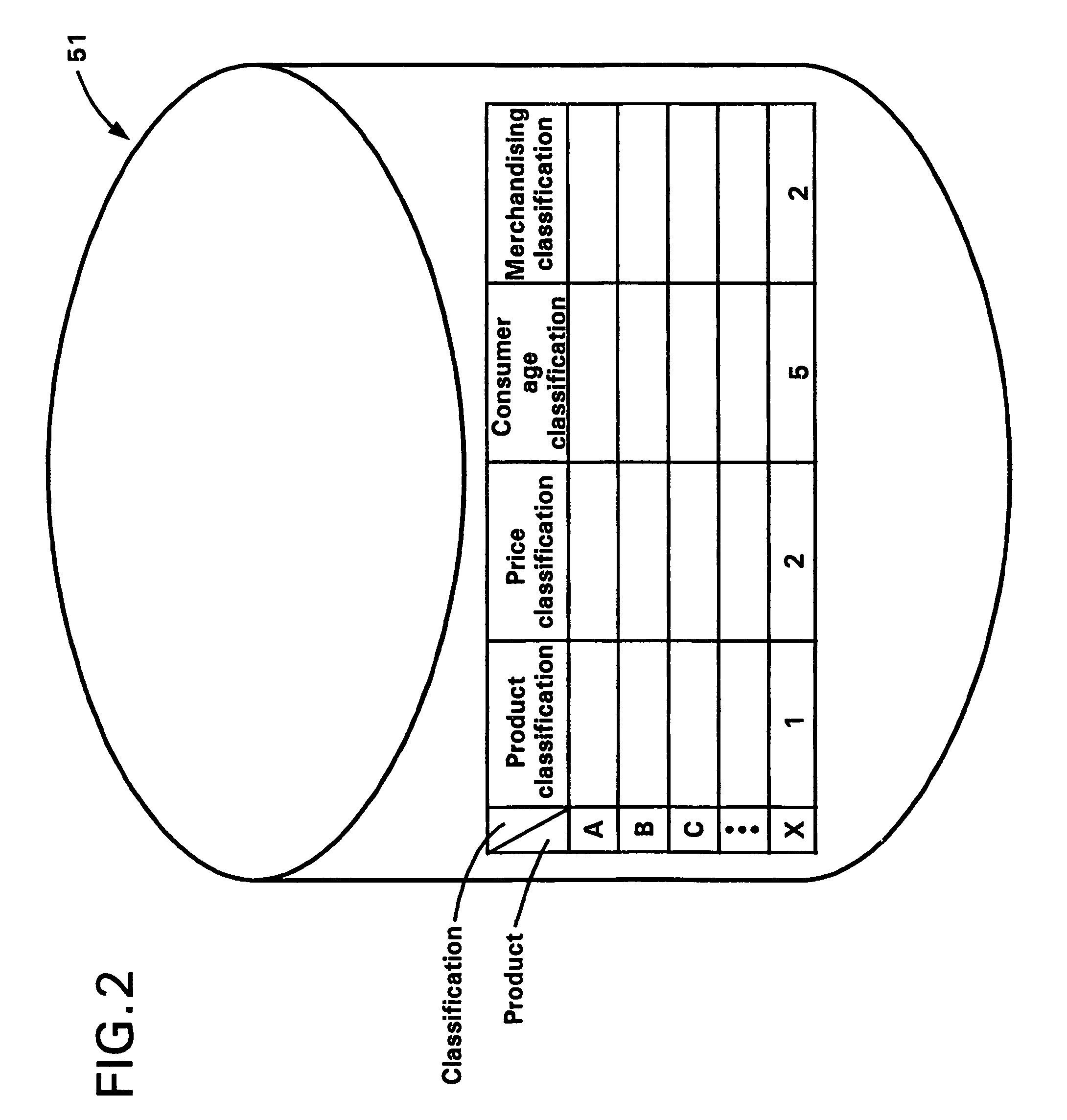Flexible production and material resource planning system using sales information directly acquired from POS terminals
a technology of which is applied in the field of flexible production and material resource planning system using sales information directly acquired from pos terminals, can solve the problems of limited market life, dangerous production system, and manufacturer losing many sales opportunities
- Summary
- Abstract
- Description
- Claims
- Application Information
AI Technical Summary
Benefits of technology
Problems solved by technology
Method used
Image
Examples
Embodiment Construction
[0079]FIGS. 1 through 14 are views illustrating an embodiment of the production system linked to retail sales in accordance with the present invention. As shown, this system comprises a retail sales information collecting means 1, a production size setting means 2, a directing means 3 for directing the preparation and production of raw materials, and a production means 4.
[0080]The retail sales information collecting means 1 comprises a plurality of point-of-sale (POS) terminal units 1a, 1b, 1c . . . installed at different retail outlets and a public communications line network 11 connecting the POS terminal units 1a, 1b, 1c . . . with a host computer H. These POS terminals 1a, 1b, 1c . . . each stores in memory the product names and the quantity of each product sold and transmits the stored information to the host computer H daily at a fixed hour of the day.
[0081]These POS terminals 1a, 1b, 1c . . . are not installed at all the retail outlets for any given product but are installed ...
PUM
 Login to View More
Login to View More Abstract
Description
Claims
Application Information
 Login to View More
Login to View More - R&D
- Intellectual Property
- Life Sciences
- Materials
- Tech Scout
- Unparalleled Data Quality
- Higher Quality Content
- 60% Fewer Hallucinations
Browse by: Latest US Patents, China's latest patents, Technical Efficacy Thesaurus, Application Domain, Technology Topic, Popular Technical Reports.
© 2025 PatSnap. All rights reserved.Legal|Privacy policy|Modern Slavery Act Transparency Statement|Sitemap|About US| Contact US: help@patsnap.com



